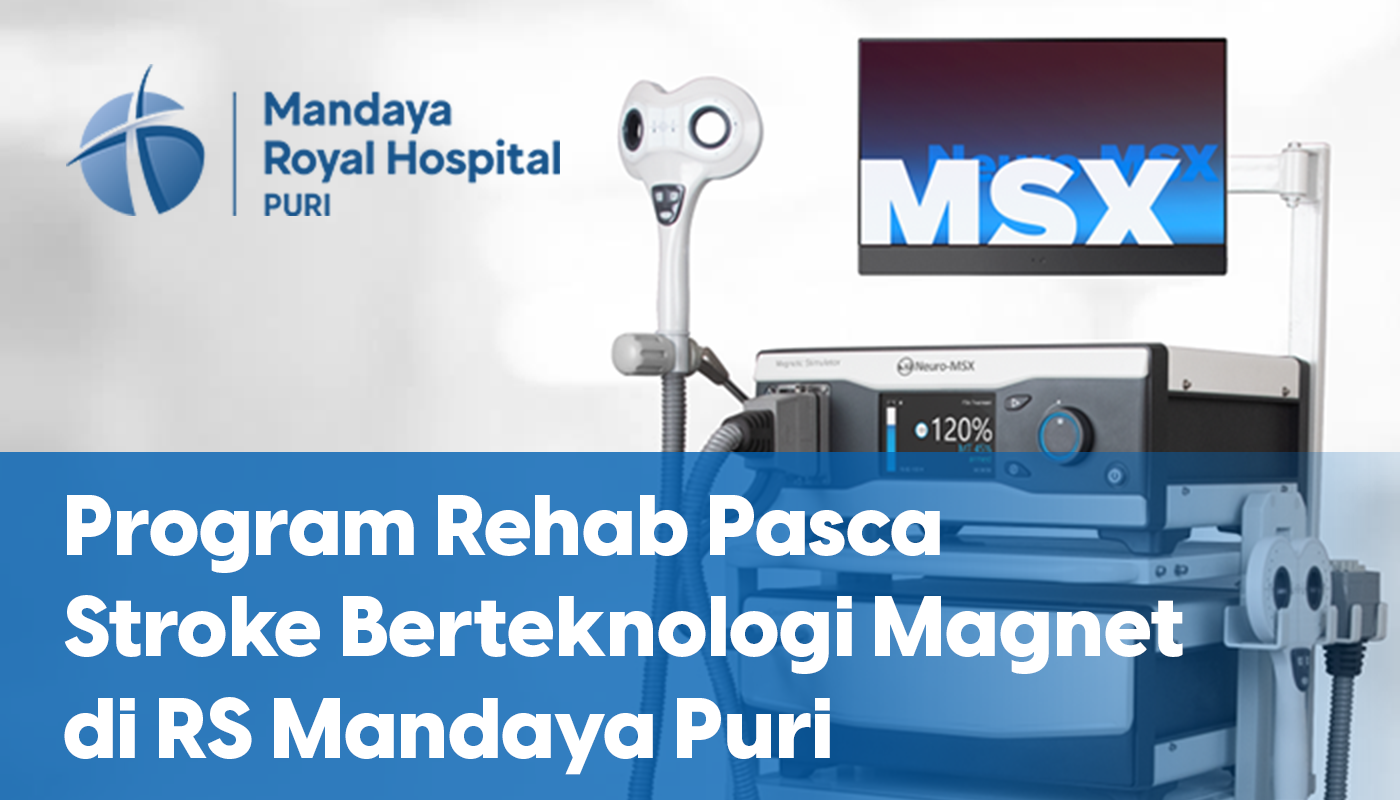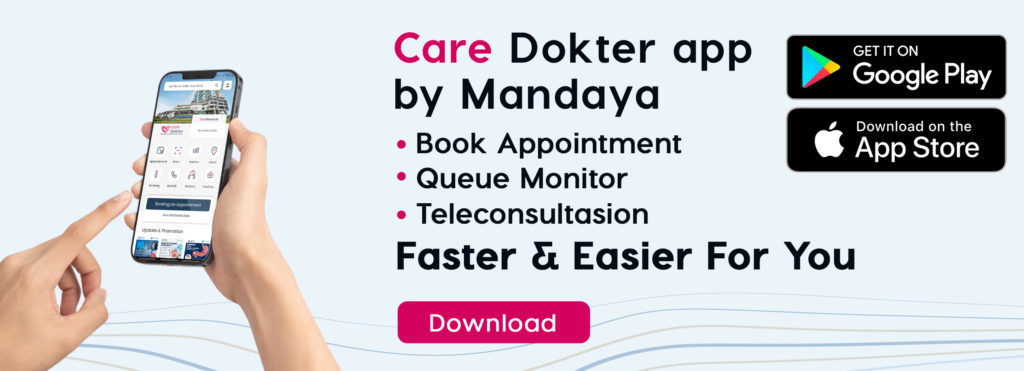Good news for stroke patients seeking a comprehensive rehabilitation program: Mandaya Royal Hospital Puri provides a 14-day and 30-day intensive post-stroke therapy program that includes Transcranial Magnetic Stimulation (TMS), a therapy utilizing magnetic technology. This advanced treatment offers a wide range of benefits for stroke patients undergoing rehabilitation.
Contents
Magnetic-Based TMS Technology in Post-Stroke Therapy at Mandaya Puri
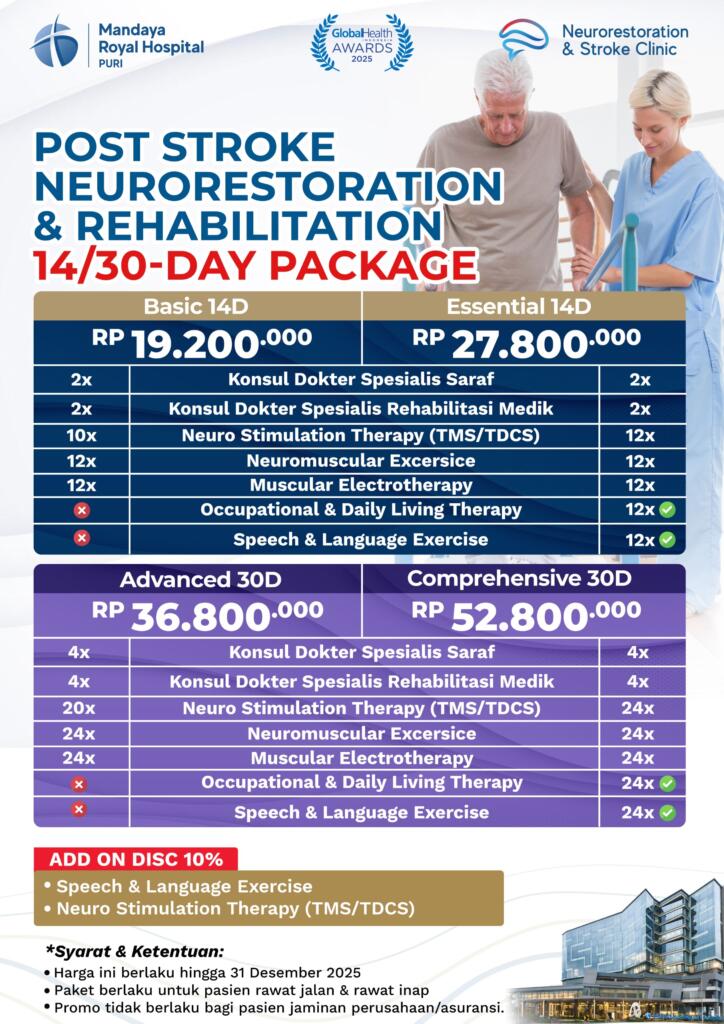
TMS is a non-invasive procedure that uses electromagnetic pulses to stimulate nerve cells and alleviate symptoms of medical conditions, including stroke. It is considered non-invasive because it does not involve surgery or skin incisions.
Advantages of TMS in post-stroke rehabilitation:
-
Non-invasive: No surgery is required, and patients can resume normal activities immediately after treatment.
-
Safe: TMS has mild side effects, and serious ones like seizures are very rare—less than 0.01% risk per session.
-
Effective: A 2017 study showed that TMS can improve swallowing difficulties in stroke patients by stimulating the motor cortex.
-
Compatible with other treatments: TMS can be combined with medication, mental health therapy, and more, making recovery more holistic and effective.
Patients need not worry—TMS procedures are simple and take only about 30–60 minutes. No anesthesia is required, so patients can return to normal activities afterward.
How Is the TMS Procedure Done?
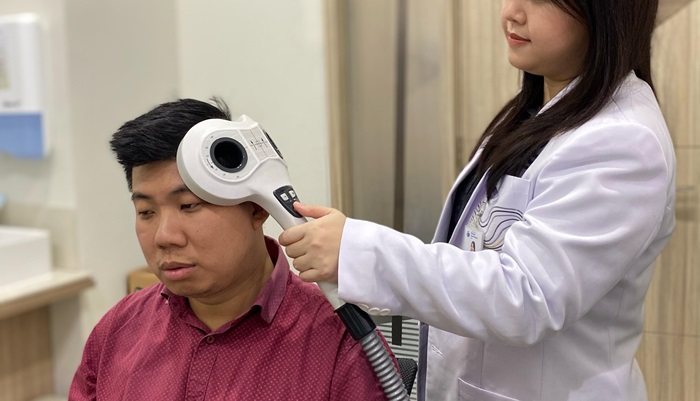
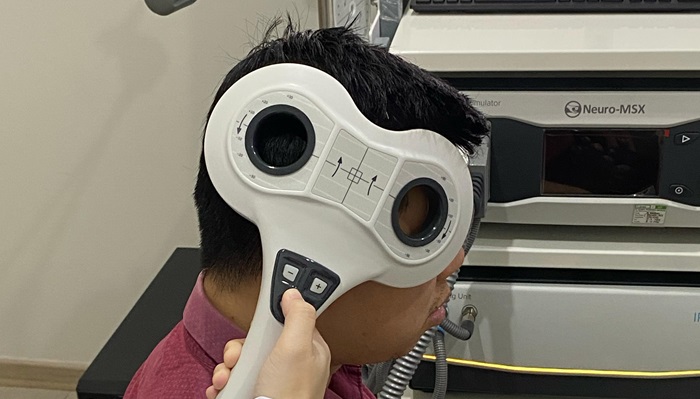
TMS at Mandaya Royal Hospital Puri is performed as an outpatient procedure, meaning patients can return home the same day.
Here’s how it works:
-
The doctor asks the patient to wear earplugs to reduce the clicking sound of magnetic impulses.
-
The patient sits in a comfortable chair.
-
No anesthesia is needed—the patient remains awake throughout the session.
-
For first-time patients, the doctor measures the patient’s head to determine coil placement.
-
The doctor adjusts the TMS machine based on these measurements.
-
The magnetic coil is placed over the front area of the brain, and treatment begins.
-
Patients will hear clicking sounds and feel tapping sensations under the magnetic coil during the session.
A Comprehensive Post-Stroke Rehabilitation Program
Magnetic-based TMS complements other therapies in the 14-day and 30-day post-stroke rehabilitation programs at Mandaya Royal Hospital Puri.
These programs include a variety of therapies to enhance patient recovery, such as:
-
Neuromuscular Exercise: Strength and fitness routines with specialized movements for stroke patients.
-
Muscular Electrotherapy: Uses electrical currents through electrodes to stimulate muscle contractions and aid recovery.
-
Occupational & Daily Living Therapy: Helps patients improve their ability to perform everyday tasks.
-
Speech & Language Exercises: Focuses on improving speech clarity, vocabulary, and social communication for stroke patients.
Additionally, the post-stroke therapy program includes consultations with neurologists and rehabilitation medicine specialists to guide patients through recovery.
Mandaya Royal Hospital Puri has at least 8 neurologists and 2 rehabilitation specialists, available Monday through Saturday. In emergency cases, neurologists are available 24/7 to ensure patients receive the best care at all times.
Stroke Screening Packages at Mandaya Royal Hospital Puri

It’s important to remember that stroke doesn’t strike suddenly—it often stems from underlying risk factors. That’s why early screening is essential for prevention.
Mandaya Royal Hospital Puri offers Basic and Advanced stroke screening packages to help detect risk factors early on.
Mandaya Royal Hospital Puri’s post-stroke therapy program is available in 14-day and 30-day packages to suit your needs.
If you’re interested, you can contact the hospital through WhatsApp Chat, Book Appointment, or use the Care Dokter app, available on Google Play and the App Store. The app helps you schedule visits, check queue numbers, and access complete information easily.

